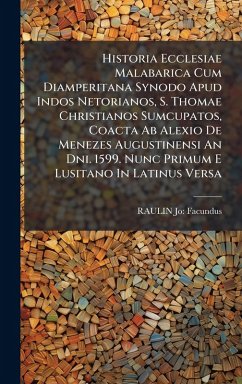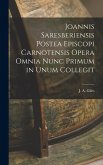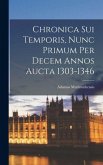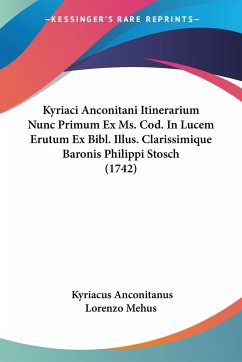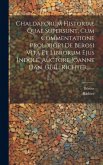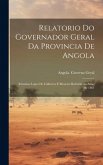"Historia Ecclesiae Malabarica" explores the historical narrative of the Malabar Church, focusing particularly on the Synod of Diamper in 1599. This significant event, orchestrated by Alexio de Menezes, aimed to bring the Netorian Christians, also known as Saint Thomas Christians, under the authority of the Roman Catholic Church. Originally written in Portuguese, this Latin translation by Jo: Facundus Raulin offers valuable insights into the religious and cultural interactions of the period. The book sheds light on the complexities and consequences of the Synod, providing a detailed account of the efforts to align the Malabar Church with Roman Catholic doctrines. It serves as a crucial historical document for understanding the evolution of Christianity in India and the broader dynamics of religious conversion and cultural exchange during the late 16th century. This text is essential for scholars of religious history, South Asian history, and those interested in the interactions between Eastern and Western Christian traditions. This work has been selected by scholars as being culturally important, and is part of the knowledge base of civilization as we know it. This work was reproduced from the original artifact, and remains as true to the original work as possible. Therefore, you will see the original copyright references, library stamps (as most of these works have been housed in our most important libraries around the world), and other notations in the work. This work is in the public domain in the United States of America, and possibly other nations. Within the United States, you may freely copy and distribute this work, as no entity (individual or corporate) has a copyright on the body of the work. As a reproduction of a historical artifact, this work may contain missing or blurred pages, poor pictures, errant marks, etc. Scholars believe, and we concur, that this work is important enough to be preserved, reproduced, and made generally available to the public. We appreciate your support of the preservation process, and thank you for being an important part of keeping this knowledge alive and relevant.
Bitte wählen Sie Ihr Anliegen aus.
Rechnungen
Retourenschein anfordern
Bestellstatus
Storno

